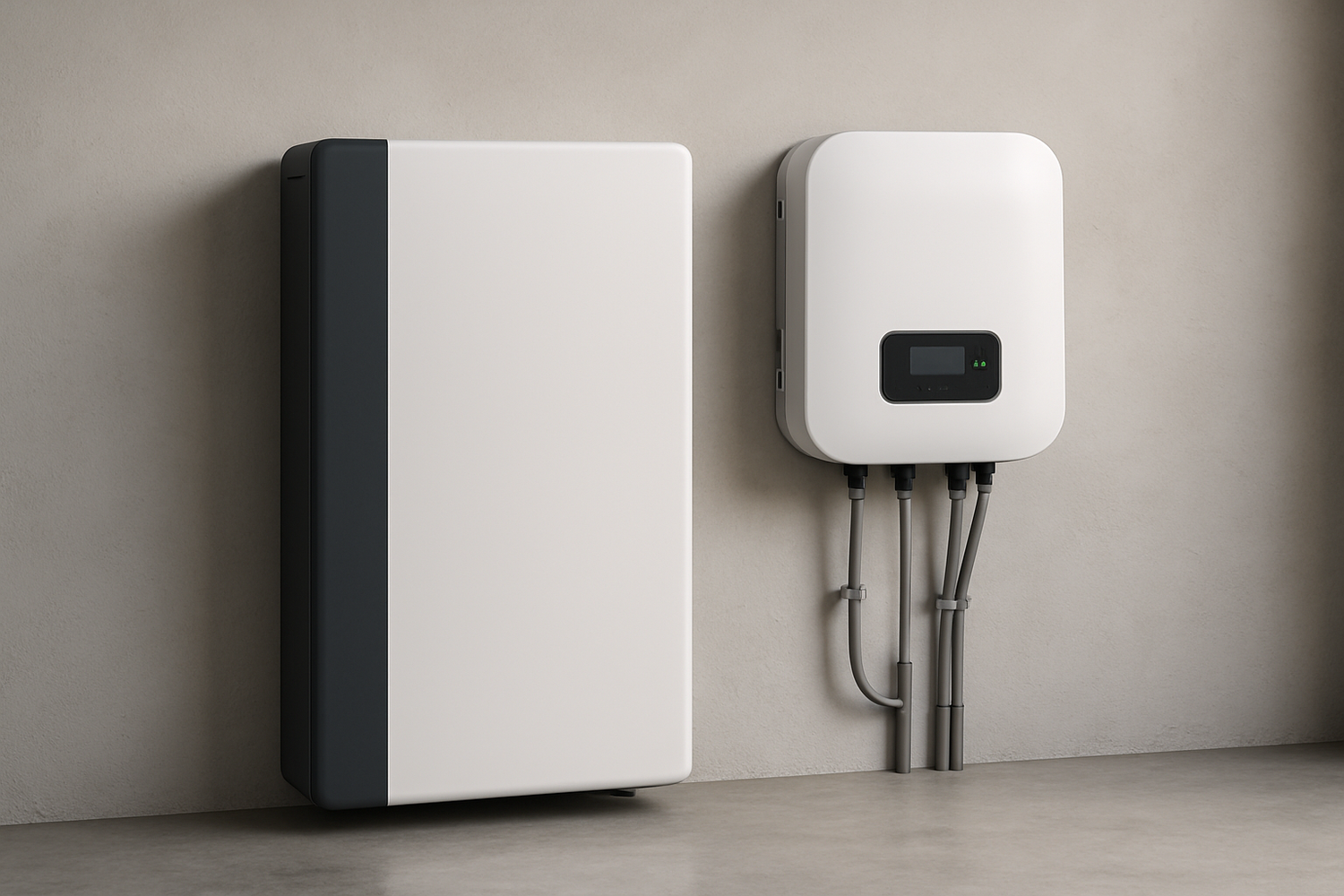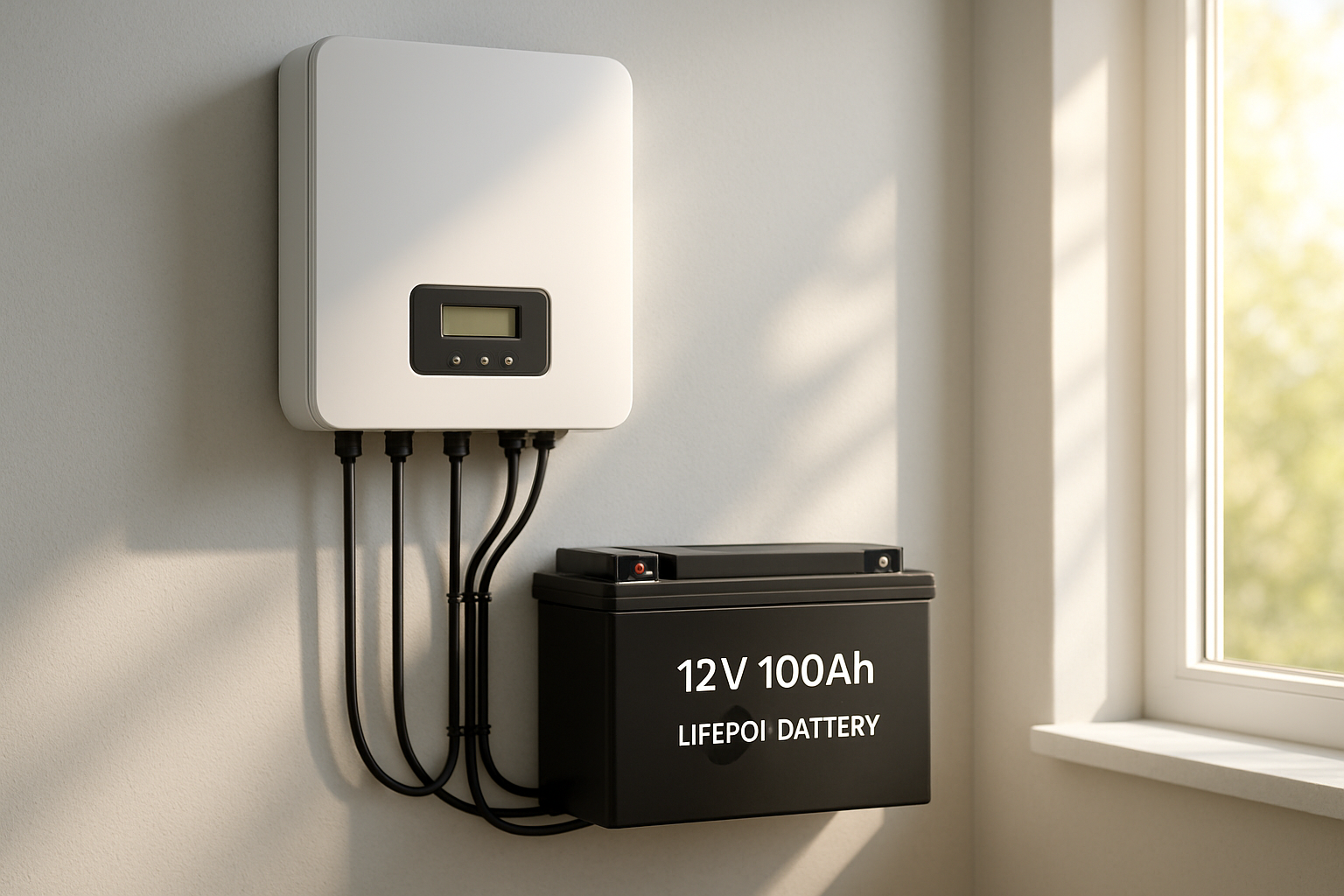As more homeowners turn to solar energy for power, the role of battery storage becomes increasingly vital. A home battery storage system allows you to store the excess energy your solar panels generate during the day for use at night or during a power outage. This capability is key to achieving greater energy independence. This guide provides a clear overview of lithium-ion solar battery prices in 2025, breaking down the costs and exploring the market trends that shape them.
Understanding the Core Components of Solar Battery Costs
The total price of a home solar battery system is more than just the cost of the battery itself. It includes several essential components and services that work together to create a functional and reliable energy storage solution. Understanding these elements helps clarify the final price you can expect to pay.
The Battery Itself: Cost per Kilowatt-Hour (kWh)
The largest single hardware expense is the battery, and its price is primarily determined by its capacity, measured in kilowatt-hours (kWh). A higher kWh rating means the battery can store more energy, providing power for a longer duration. For residential use, lithium iron phosphate (LiFePO4) batteries are a popular choice due to their excellent safety profile, long lifespan, and reliable performance. While the market has seen price fluctuations due to raw material costs, the underlying trend points toward increasing affordability as manufacturing scales up.
Balance of System (BOS) Components
Beyond the battery, several other pieces of hardware are necessary for the system to operate. Collectively known as the Balance of System (BOS), these components typically include:
- Inverter: A hybrid inverter is often used to convert direct current (DC) electricity from both the solar panels and the battery into alternating current (AC) for your home.
- Monitoring System: This hardware and software allows you to track your energy production, storage levels, and consumption in real-time.
- Wiring and Mounting Hardware: Safe and secure electrical wiring, circuit breakers, and mounting racks are crucial for a professional and code-compliant installation.
Installation and Labor Costs
Professional installation is critical for the safety and performance of your solar battery system. Labor costs can vary significantly based on your geographic location, the complexity of the installation, and the need for any electrical panel upgrades. This part of the cost also covers permitting fees required by local authorities and the final inspection to ensure the system meets all safety standards.
Key Factors Influencing Lithium-Ion Battery Prices in 2025
The price of a lithium-ion solar battery is not static. It is influenced by a combination of global economic factors, government policies, and technological progress. These elements work together to shape the market and determine the final cost for consumers.
Raw Material Supply and Demand
The cost of raw materials like lithium, phosphate, and other key minerals is a primary driver of battery prices. Global demand for these materials, driven by both energy storage and electric vehicles, can create supply chain pressures. According to a report from the International Energy Agency (IEA) titled World Energy Investment 2023, tight supply chains for battery metals contributed to a temporary increase in battery costs in 2022 for the first time in a decade, though this has not stopped massive growth in the sector. Market stability and new sourcing strategies are helping to moderate these effects over time.
Government Incentives and Tax Credits
Government policies play a significant role in making solar battery storage more affordable. In the United States, the federal Investment Tax Credit (ITC) allows homeowners to deduct a percentage of the total cost of their solar-plus-storage system from their federal taxes. The IEA's analysis of the Inflation Reduction Act suggests that such federal support could reduce capital costs for battery storage by nearly 15%. Many states and local utility companies also offer additional rebates or incentives, further reducing the net cost of a home solar battery system.
Technological Advancements and Manufacturing Scale
Continuous innovation in battery technology leads to more efficient and less expensive products. Advances in LiFePO4 chemistry have improved energy density and cycle life, delivering more value over the battery's lifespan. Simultaneously, as global manufacturing capacity expands, economies of scale help drive down production costs, making these advanced energy storage solutions more accessible to a wider audience.
Analyzing the Price: What to Expect for a Residential System
When budgeting for a home solar battery, it is helpful to look at estimated costs for common system sizes. The total price includes the battery, BOS components, and full installation. The table below provides general price ranges you might encounter in 2025.
| System Size (kWh) | Estimated Battery Cost Range | Estimated BOS & Installation Range | Total Estimated Installed Cost |
|---|---|---|---|
| 10 kWh | $5,000 - $8,000 | $3,000 - $5,000 | $8,000 - $13,000 |
| 15 kWh | $7,500 - $12,000 | $4,000 - $6,000 | $11,500 - $18,000 |
| 20 kWh | $10,000 - $16,000 | $5,000 - $7,000 | $15,000 - $23,000 |
Disclaimer: These figures are estimates for 2025 and can vary based on location, installer, and specific equipment chosen. This information does not constitute investment advice.
Beyond the Sticker Price: Lifetime Value and Performance
The initial purchase price is only one part of the equation. The true value of a solar battery is realized over its entire operational life. Key performance metrics like cycle life, depth of discharge (DoD), and round-trip efficiency determine how much energy the battery will provide over the years. A high-quality LiFePO4 battery, for example, may offer a longer lifespan and more usable energy, resulting in a lower Levelized Cost of Storage (LCOS). For a detailed exploration of key performance metrics that define the long-term value of a battery, you can reference this ultimate guide to solar storage performance.
The Future Outlook for Solar Battery Pricing
The future for residential energy storage is bright. Investment in battery storage is growing at an unprecedented rate. The IEA reported that global spending on battery storage more than doubled in 2022, with the United States, China, and Europe accounting for 90% of that investment. This trend is expected to continue, driven by strong policy support and the increasing economic appeal of combining solar with storage. As the market matures and technology continues to advance, homeowners can expect to see continued improvements in both performance and affordability, making energy independence a more attainable goal than ever before.
Final Thoughts
Understanding the price of a lithium-ion solar battery in 2025 requires looking at the complete picture. The final cost is a sum of the battery capacity, supporting hardware, and professional installation. While market forces like raw material costs can cause short-term fluctuations, the long-term trend is fueled by powerful government incentives and rapid technological innovation. By considering the lifetime value and performance of the system, you can make a well-informed decision that provides energy security and peace of mind for years to come.
Frequently Asked Questions
How much does a lithium-ion solar battery cost in 2025?
The total installed cost for a residential lithium-ion solar battery system in 2025 typically ranges from $8,000 to over $23,000. The final price depends heavily on the battery's capacity (kWh), the brand of equipment, and local installation costs.
Are solar battery prices expected to drop in 2025?
While the long-term trend for battery prices is downward due to technological advancements and manufacturing scale, prices in any given year can be volatile. Raw material costs and supply chain dynamics can cause short-term fluctuations. However, generous government incentives can significantly lower the effective cost for consumers.
What is the most significant factor affecting the cost of a home solar battery system?
The battery's storage capacity, measured in kWh, is the largest single hardware cost. However, the Balance of System components—such as the inverter and monitoring hardware—along with professional installation and permitting, also make up a substantial portion of the total system price.





Leave a comment
All comments are moderated before being published.
This site is protected by hCaptcha and the hCaptcha Privacy Policy and Terms of Service apply.